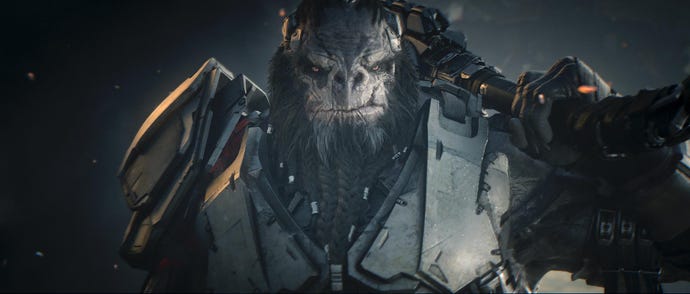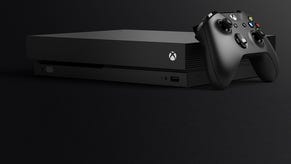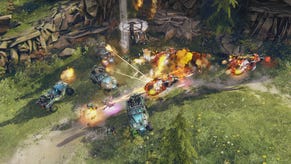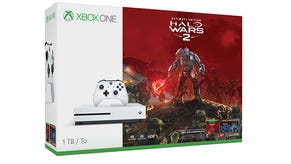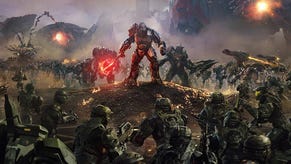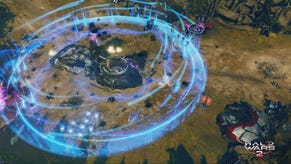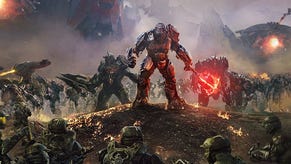Halo Wars 2: another confusing attempt at a console RTS
Maybe strategy games really are just better suited to the PC.
Halo Wars 2: another confusing attempt at a console RTS
For some, Halo Wars was a demonstration of how real-time strategy can work on a console. For others, it offered ample evidence of why the genre continues to be ill-suited to a control pad. That debate is subjective. Objective is that Halo Wars tried to prove that the RTS can exist away from the mouse and keyboard.
"An attempt at added depth is designed to facilitate more approaches for the player, but the result as it stands is more confusing than rewarding."
Halo Wars 2 is trying to do the same thing, although the performance of its open beta suggests otherwise. Where the original game managed to successfully simplify many staple RTS elements into a form that allowed them to be interacted with through analogue sticks and face buttons, this new offering opts for a slightly more complex approach. Seemingly, the attempt at added depth is designed to facilitate more approaches for the player, but the result as it stands is more confusing than rewarding.
Where the first game had a single supply resource, this one has two - requiring two different buildings to be stationed upon the limited nodes surrounding your base. In many instances, differing quantities of these two supplies are required to attain new buildings and troops, which sets up an expectation of having to carefully manage the generation and spend of the two supply types.
However, because one of the supply resources generates so much quicker than the other, you only end up having to worry about one of them. Essentially, then, there remains only one resource to worry about and track off.
It's an odd inclusion and one that stands in direct contrast to the clear, concise elements that you had to keep in mind in Halo Wars. Now there are more numbers laden about the screen, but only some of them need to be noted. Hopefully this is down to a problem in the balancing of a game that is, admittedly, not due until early 2017. There's plenty of time to get things right, but it remains disheartening to see a lack of precision from a series that initially built itself upon exactly that.
Where numbers are concerned, better is the fact that your units have more hit points and last longer in battle as a result. All too often in RTS games your troops seem to have all the staying power of tissue paper in the rain, but now they can withstand enough of a bombardment for you to react to the situation and attempt to reposition them into a more favouring formation before all is lost.
Working formations are of primary concern in this beta given that Domination is the only mode presently available. The rules are the same here as you've experienced in Call of Duty et al: control more zones than your opponents in order to deplete theirs tickets and retain yours. Lose all of your tickets and you lose the game. If you don't think about your formation and concoction of unit types before moving in to take control of a zone, and subsequently hold it for the duration of the game, then you're going to sink without a trace.
In theory, then, Domination has potential to transfer itself to this genre. In Halo Wars 2's reality, though, the control pad gets in the way. Having to flick around the map to track of all the action occurring around capture points, as well as your own base and building queue, is not at all intuitive without the benefit of a mouse and keyboard. All too often you find yourself spending more time repositioning the camera than you do giving orders with a view to winning the game and living up to your potential as commander.
Given that Halo Wars 2 is coming to the PC as well as the Xbox One, it could very well be the case that that singular focus on console players has been lost. Good news for those that prefer PC, then.
"There's plenty of time to get things right, but it remains disheartening to see a lack of precision from a series that initially built itself upon exactly that."
Better are the technical aspects of the visuals, with that ever-popular Halo aesthetic punctuated by some very impressive particle effects and animations. Fire and bullet tracers are especially notable, not only looking the part but helping enormously when it comes to you being able to instantly work out what kind of troops and weapons you're up against. It's nice to be able to rely on visual indicators, rather than raw stats and numerical data, as a means of informing your decisions.
Unfortunately, the same praise cannot be heaped upon environmental design. There's only one map available in the beta and, to say the least, it's underwhelming. Drab greys blend with browns and mustard yellows, with nondescript rocky outcrops and cliff sides your only means of determining where your troops are without referring to the mini map. Fingers crossed that this map was chosen because it's the only one deemed ready, as opposed to it being the current best of the bunch.
The most positive thing that can be said about Halo Wars 2 right now is that its release is still some way off. In 2009 the original game failed to convince the majority that it had solved the RTS genre's incompatibility with consoles, and there's little evidence at this point to suggest that this sequel has made noteworthy gains in that direction.
What's been shown so far remains interesting to probe and prod, although not always for the right reasons. Let's hope things are different come the February 2017 launch.
To catch up on all the games, trailers and impressions from E3 2016, check out our hub here.
